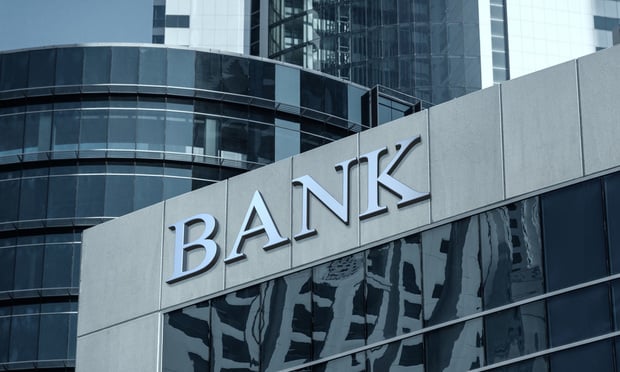In April, FASB met to clarify guidance on FAS 157, otherwise known as fair value accounting standards, bowing to pressure from both financial institutions and Congress. These guidelines are meant to give institutions instruction on how to value assets on their books when there is not an active trading marketplace. One of the ways accountants ascertain the value of a security is by reviewing current transactional activity in the marketplace as well as bids or price quotes. With the current recession slashing the worth of those holdings and essentially freezing acquisition activity, banks and other financial entities have been forced to write down the values of assets on their books.
"Many companies holding commercial assets feel that over the past year, the quoted prices really don't reflect the price that would come about in an orderly sale market," says Allan N. Krinsman, partner in the financial reform working group of Stroock & Stroock & Lavan LLP here. "They feel it's a low bid, or a fire sale price, and they should not get caught marking down those assets based on the quoted bids that don't reflect what would be paid in an active market without distressed sales." The attorney also notes that these revisions apply to debt securities rather than loans.
According to Krinsman, financial institutions can now use their own judgment when settling on an asset's worth, provided they give a detailed analysis on how they reached that conclusion. "It's more than just keeping a price at a higher level," he says. "Management and the accountants are required to disclose how they get to those prices."
Further, the banks and financial entities need only assert that they have no intention to sell the asset instead of stating they plan to hold it. "It's easier for them to say at the present time they have no intention to sell these commercial securities," Krinsman explains. "Based on that assertion, they can avoid having to take an impairment charge."
While these clarifications may enable banks to place a higher book value on their debt securities, the true impact of FAS 157 may be lost in the shuffle of an alphabet soup of federal programs intended to clear toxic assets off the books of financial institutions and jump-start lending. Of more importance to the eventual thaw in the capital market are the TARP, Public Private Investment Fund (PPIP) and Term Asset-Backed Securities Loan Facility (TALF).
Gary Gabriel, executive director of Cushman & Wakefield's Metropolitan Area Capital Markets Group in East Rutherford, NJ, says that FAS 157 could strengthen banks' balance sheets, thus making them more willing to lend. Yet by doing so, they may be less likely to sell their assets at the discounted price the market wants to see, thus postponing what many in the industry say is necessary for the return of an active trading arena.
"On the one hand, healthier banks and financial institutions are a net positive for the market," he says. "The flip side is, however, they won't be forced to sell those particular assets on their balance sheet, which is not necessarily a great thing. One of the things we've been looking for is a market-clearing event that will cause these assets to be liquidated quickly. This particular move forestalls what some might say is the inevitable, which is actually clearing these assets off of banks' books."
Bill Campbell, a partner in the real estate practice of Stroock in New York City, says that the initial reaction from the industry has been rather cool toward the FAS 157 revisions. "If you are not going to force banks to truly mark these assets to market, then it's a further reason for them to keep them on their books, not sell them, and we will continue to have a backlog for unsold CMBS," he says. "This will delay, or at least drive up the yields on new issuances of CMBS--an important funding source for new commercial loans."
Campbell also says the industry may be "overreacting" to how FAS 157 will affect whole loans. "FAS 157 applies only to securities and loans originated or purchased for re-sale or securitization," he explains. "Accordingly, FAS 157 should have no affect on how banks are required to value a large portion of the loans held on their balance sheets."
As James J. Maurer, president of Cofinance Inc. in Hackensack, NJ, sees it, the changes to FAS 157 have come too late. "At this point, banks are trying to gain their health and continue to be stingy about their lending to real estate assets," he says. Moreover, the FAS 157 clarifications have come at the same time that the government has introduced a slew of programs to rid financial institutions of troublesome assets and stimulate the economy.
"I don't think lending is going to get back to where it has been because of FAS 157," Maurer says. "It's a combination of all these programs and how they affect and cancel each other out that will determine which one is going to work."
Recently, the Federal Reserve decided to expand TALF to include newly issued, highly rated commercial mortgage-backed securities as eligible collateral, a move many in commercial real estate had vigorously supported. Yet for some, despite that inclusion, confusion still reigns in the marketplace.
"Right now, there is too much noise in the market," Maurer says. "No one is making a move. I'm a buyer, and what I'm finding is that everyone is just sitting tight. People are waiting to see what the impact all these changes will have. But the government keeps changing them. We're all waiting for it to calm down and to see how it all plays out. Right now, it's difficult to determine."
Maurer also points out that changes to an accounting law will have little impact on the underlying cause of the slump in commercial real estate. "FAS 157 is not going to create employment," he says. "You have reported unemployment at 8.5%, but effective unemployment is closer to 10%. That all translates to space back on the market, which translate to vacancies, which has a negative effect on pricing."
Want to continue reading?
Become a Free ALM Digital Reader.
Once you are an ALM Digital Member, you’ll receive:
- Breaking commercial real estate news and analysis, on-site and via our newsletters and custom alerts
- Educational webcasts, white papers, and ebooks from industry thought leaders
- Critical coverage of the property casualty insurance and financial advisory markets on our other ALM sites, PropertyCasualty360 and ThinkAdvisor
Already have an account? Sign In Now
*May exclude premium content© 2024 ALM Global, LLC, All Rights Reserved. Request academic re-use from www.copyright.com. All other uses, submit a request to [email protected]. For more information visit Asset & Logo Licensing.








